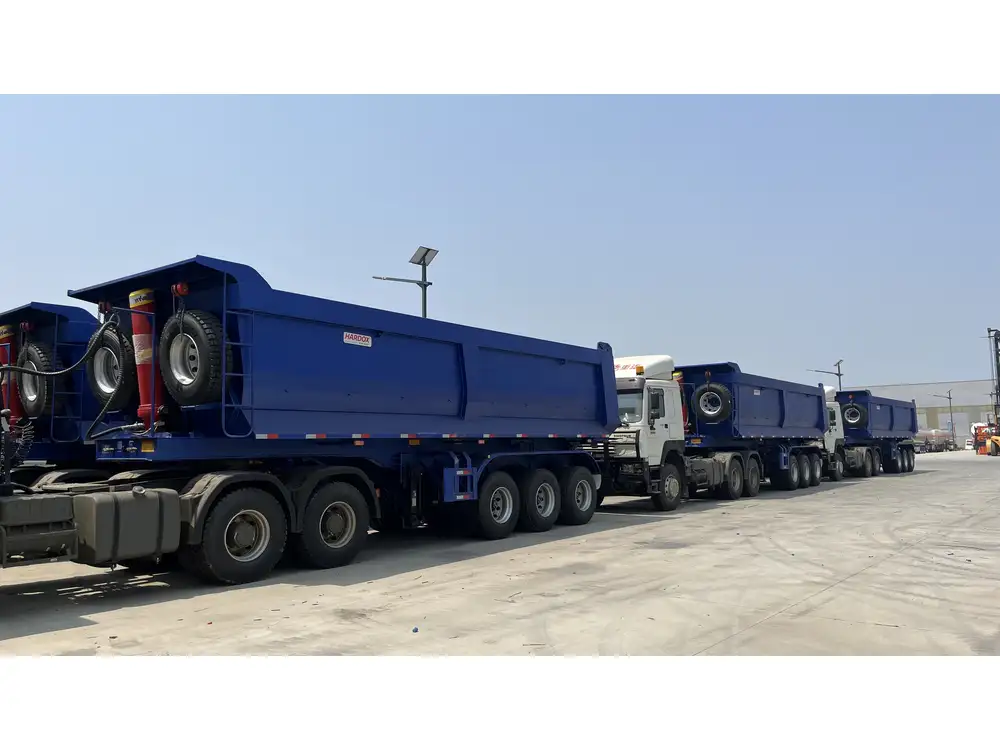Ensuring the safety and reliability of a semi-trailer involves a myriad of checks, with lighting systems being paramount. Properly functioning lights not only comply with legal standards but also enhance road safety, making it crucial for drivers and technician crews alike to perform effective checks. In this guide, we will explore a systematic approach to testing semi-trailer lights, covering various methodologies, tools required, common issues, and maintenance tips, thereby empowering you to ensure optimal visibility and compliance on the road.
Understanding Semi-Trailer Lighting Systems
Before diving into the tests, it’s essential to comprehend the basic components of semi-trailer lighting systems. These typically include:
| Component | Function |
|---|---|
| Tail Lights | Illuminate the back of the trailer; visibility to other drivers. |
| Turn Signal Lights | Indicate turning intentions; crucial for preventing accidents. |
| Brake Lights | Activate when brakes are applied; signal stopping to following vehicles. |
| Marker Lights | Outline the trailer’s profile; essential for night visibility. |
| Reflectors | Provide additional visibility through reflection of headlights. |
Understanding the basic functionality and layout of these components is vital for effective testing.
Essential Tools for Testing
To conduct thorough tests on your semi-trailer lights, the following basic tools should be readily available:
- Multimeter: Used to measure voltage and check for continuity.
- Circuit Tester: Helps to identify live wires and fault locations.
- Light Bulb Tester: It determines whether a bulb is functioning correctly.
- Wiring Diagrams: Essential for troubleshooting specific wiring issues.
- Protective Gear: Always wear gloves and safety glasses to ensure personal safety during tests.

Step-by-Step Testing Procedure
1. Preliminary Inspection
Before initiating electrical testing, a visual inspection can often reveal glaring issues. Check the following:
- Physical Damage: Look for cracked or broken fixtures, frayed wires, or disconnected plugs.
- Corrosion: Rust on connections and light fixtures can impede electrical flow.
- Lens Clarity: Ensure all lenses are clean, as dirt can affect light visibility.
2. Testing Tail Lights
To ensure the tail lights shine brightly:
- Connect the Trailer: Attach the semi-trailer to a tractor or vehicle equipped with light connections.
- Power On: Activate the running lights.
- Multimeter Use: Set the multimeter to DC voltage, and probe the light’s terminals. A reading between 12-14 volts indicates proper function.
- Test Bulb: If the bulbs do not light up, replace them and recheck.

3. Testing Brake Lights
Brake lights are vital for safety:
- In-Cab Activation: Have an assistant press the brake pedal while you observe the lights.
- Voltage Check: Use the multimeter on the bulb’s terminals while the brake is activated. Ideally, you should see voltage readings similar to those from the tail light test.
- Inspect Switching Mechanism: If the lights don’t illuminate, check the brake light switch situated near the brake pedal for proper operation.
4. Turn Signal Functionality
Correct turn signals are crucial for direction indication:
- Signal Activation: Activate the turn signal from the cab.
- Observe Indication: Ensure the light flashes correctly at both the front and rear of the trailer. A fast-flashing signal indicates a bulb failure.
- Continuity Testing: If there are issues, utilize the multimeter to check for continuity along the circuit leading to the bulb.
5. Marker Light and Reflector Checks
Ensure that marker lights and reflectors are bright during tests:
- Visual Check: Inspected marker lights for functioning and clarity; replace dull or non-functioning bulbs immediately.
- Reflector Integrity: Ensure they are clean and intact, ensuring they reflect light correctly when approached.

Troubleshooting Common Light Problems
Understanding how to troubleshoot common lighting issues can save time and reduce downtime significantly.
Connector Issues
- Symptoms: Lights flicker or won’t illuminate.
- Solution: Inspect wire connectors for looseness or corrosion. Clean connections and verify seating.
Ground Faults
- Symptoms: Lights operate erratically.
- Solution: Check the grounding point on the trailer. Ensure it’s clean and securely connected to the trailer frame.

Blown Fuses
- Symptoms: Entire light assembly fails.
- Solution: Inspect and replace blown fuses located in the vehicle’s fuse box.
Faulty Bulbs
- Symptoms: Individual lights fail.
- Solution: Replace the non-functioning bulbs and retest the system.
Wiring Issues
- Symptoms: Along route lights dim or flicker intermittently.
- Solution: Use wiring diagrams to trace and inspect wires for cuts, kinks, or shorts.

Maintenance Tips for Semi-Trailer Lights
Regular maintenance can drastically reduce the chances of lighting failures when it matters most. Here are some essential tips:
- Routine Inspections: Schedule monthly inspections for all lighting components.
- Keep Connections Clean: Use dielectric grease on connections to prevent corrosion.
- Replace Bulbs Preemptively: Swap out bulbs that are nearing the end of their life cycle proactively.
- Secure Wiring: Ensure that wiring is secured away from moving parts or high-heat areas to prevent wear.
- Use Quality Parts: Consider high-quality, OEM parts for replacements which often last longer and perform better than off-brand options.
The Importance of Compliance and Safety
Proper lighting compliance is not merely a matter of preference; it’s a legal requirement. Governing bodies have established specific regulations regarding trailer lighting to enhance safety on roadways. Non-compliance can lead to severe fines and pose risks not only for the driver but also for everyone sharing the road.
Legal Lighting Regulations
| Light Type | Regulation |
|---|---|
| Tail Lights | Must be red and visible from 500 feet. |
| Brake Lights | Must activate with braking and must be bright red. |
| Turn Signals | Must be amber to the front and red to the rear. |
| Marker Lights | Must be visible from at least 500 feet. |
Ensuring compliance with these regulations not only shields you from potential fines but significantly increases road safety.

Conclusion
Thorough testing and maintenance of semi-trailer lights play an essential role in ensuring compliance with safety standards and preventing accidents on the road. By adopting a systematic approach to testing, familiarizing yourself with common issues, and undertaking regular maintenance, you can enhance your semi-trailer’s reliability and safety. Invest in quality parts, use the right tools, and prioritize maintenance; these practices will help you navigate the roads confidently and legally, ensuring you get to your destination safely.
As always, if you encounter an issue you cannot resolve, do not hesitate to consult a professional mechanic or technician who can assist in diagnosing and resolving lighting issues effectively. Taking these proactive steps not only protects you but also assures the safety of others on the road.



